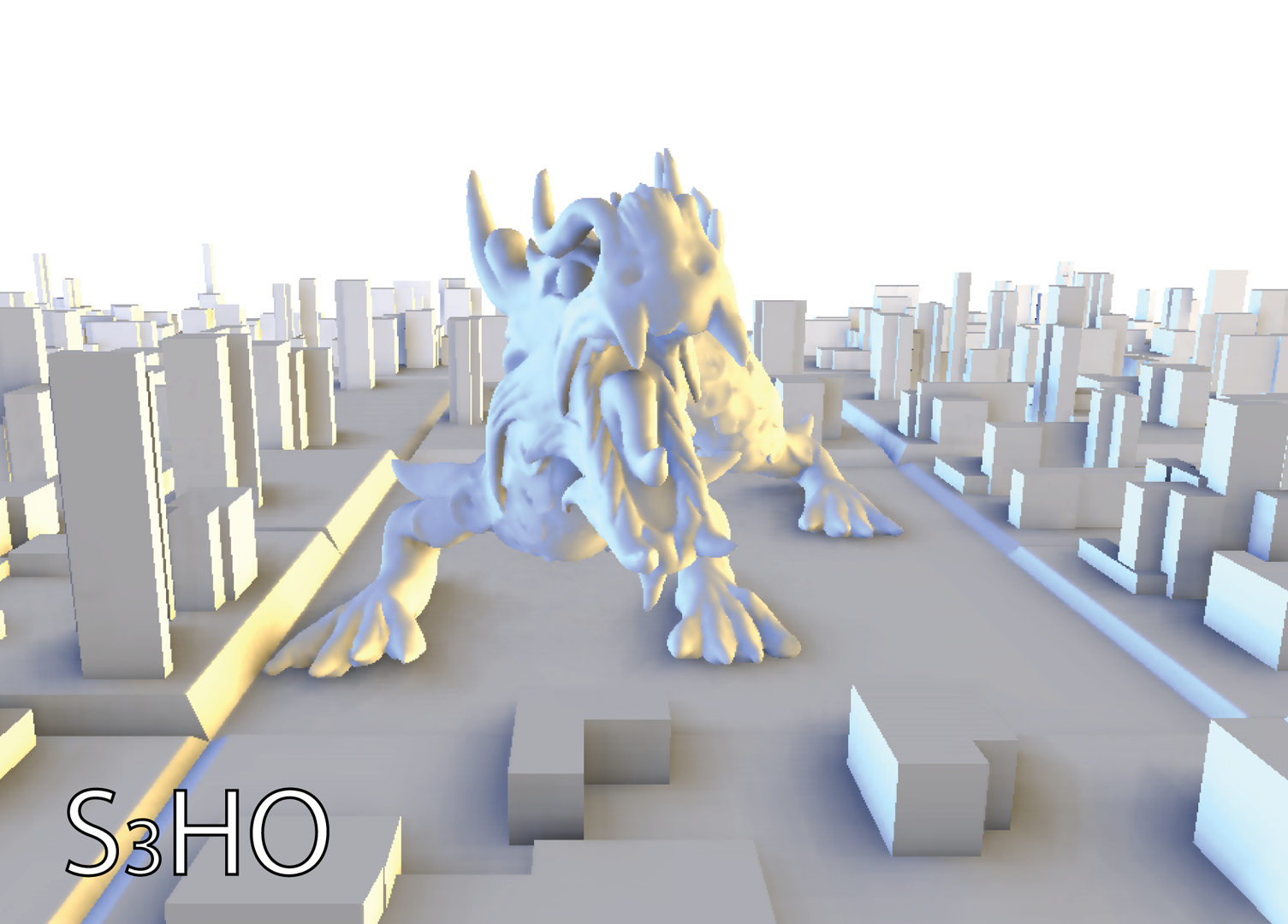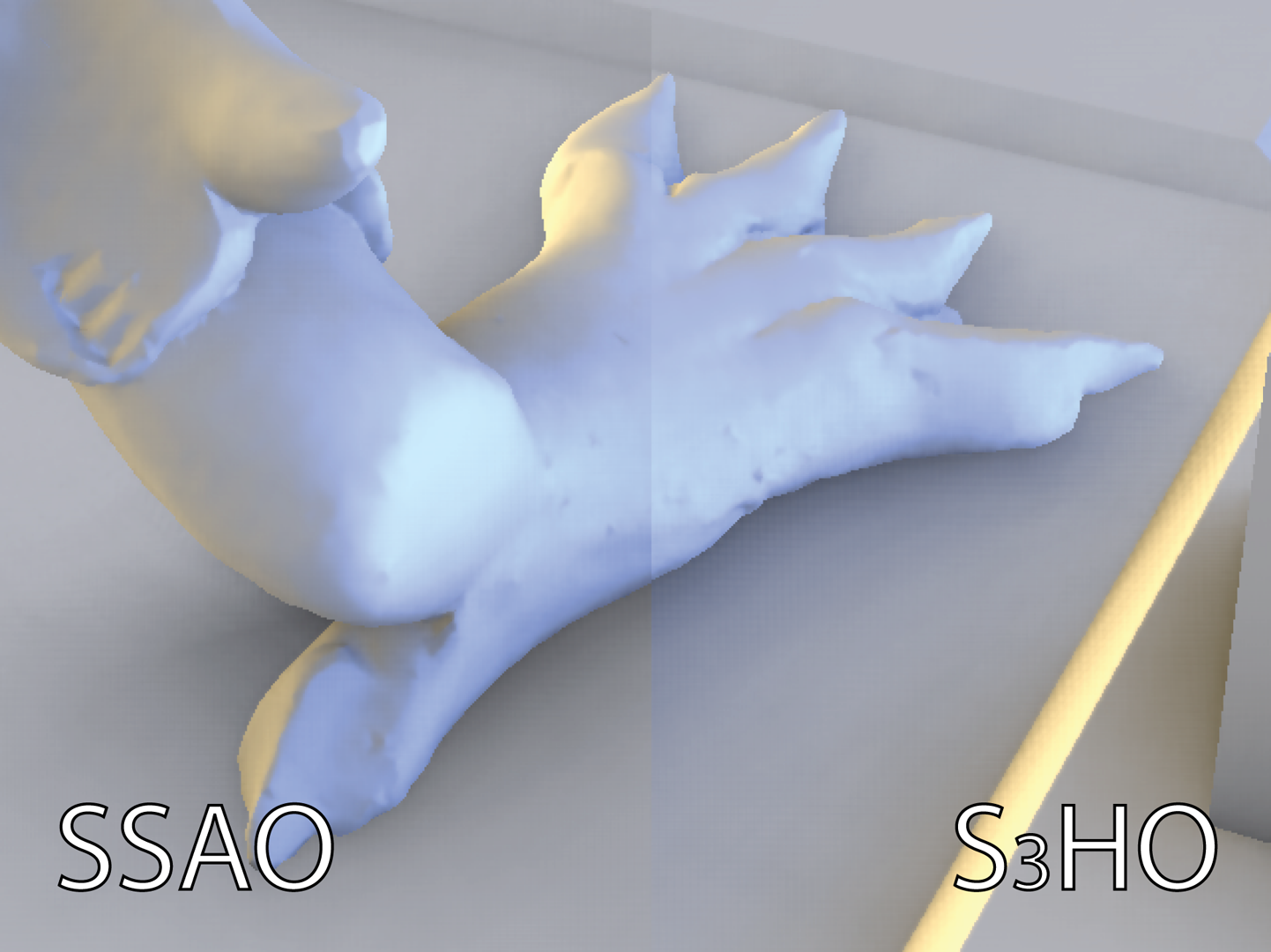“Screen space spherical harmonics occlusion (S3HO) sampling”
Conference:
Type(s):
Title:
- Screen space spherical harmonics occlusion (S3HO) sampling
Presenter(s)/Author(s):
Abstract:
One objective of global illumination (GI) models is to solve the lighting integral of the upper hemisphere at a surface point. One particular effect of GI that has become very popular in the past years is Ambient Occlusion (AO), where, independently of the lighting, a coverage factor that indicates the amount of occlusion induced by its local neighboring geometry is calculated for every surface point. Screen Space Ambient Occlusion (SSAO) algorithms allow for the approximation of this occlusion factor in real time. Ritschel et al. [2009] proposed Screen Space Directional Occlusion (SSDO), combining the calculation of occlusion and lighting by simultaneously accumulating the light of unoccluded directions when sampling the occlusion. Contrary to AO this results in colored shadows simulating directional lighting effects. Green [2003] outlined techniques based on Spherical Harmonics (SH) that approximate global lighting models with the basic principle of representing both, the incoming radiance field and the occlusion, as functions defined on the sphere that can be efficiently represented in the spherical Fourier domain. Calculating the spherical occlusion function, however, remains computationally expensive since ray tracing methods have to be applied.
References:
1. Green, R. 2003. Spherical harmonic lighting: The gritty details. Archives of the Game Developers Conference.
2. Ritschel, T., Grosch, T., and Seidel, H.-P. 2009. Approximating dynamic global illumination in image space. In Proc. of the 2009 Symposium on Interactive 3D Graphics and Games, ACM, New York, NY, USA, 75–82.






